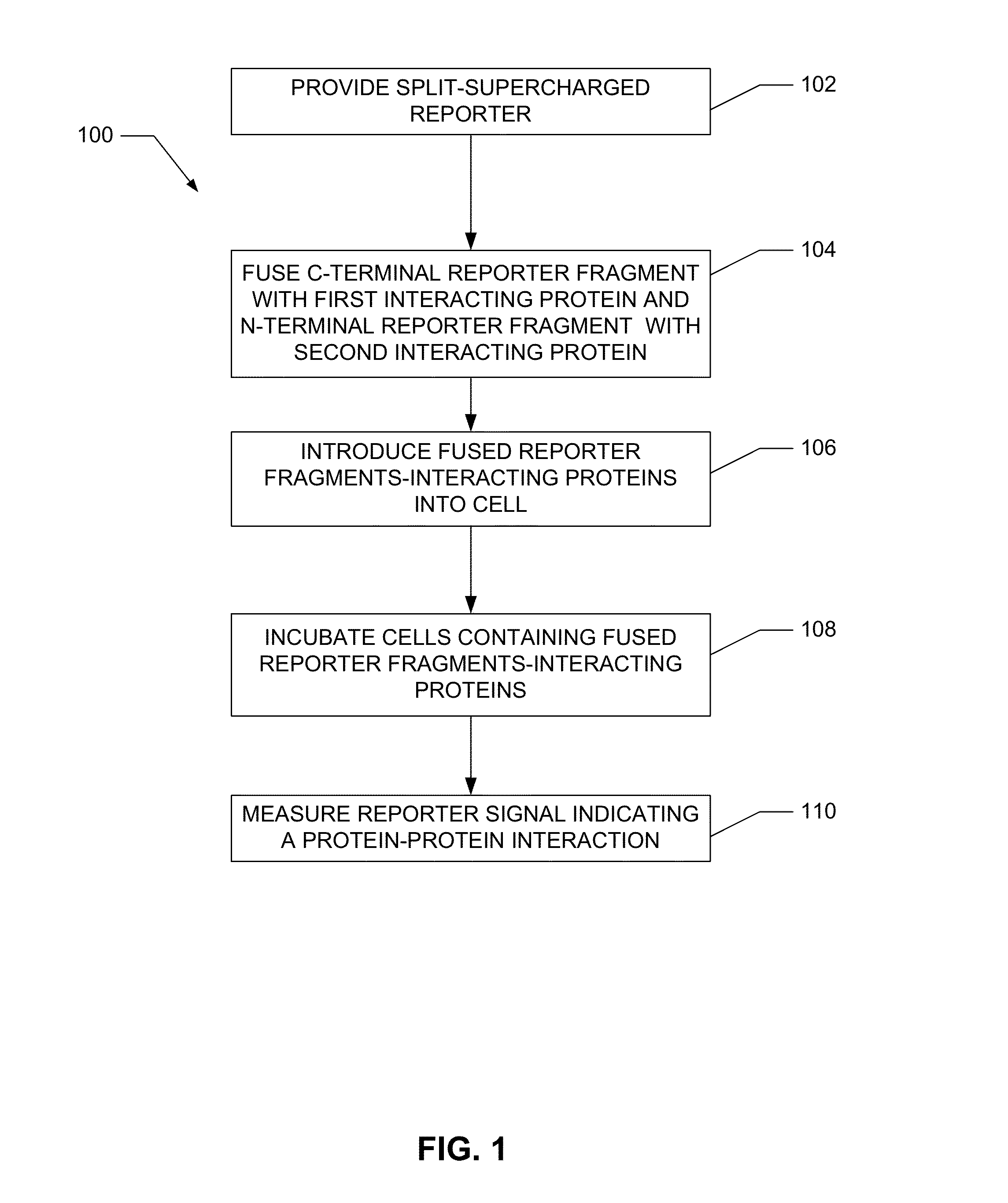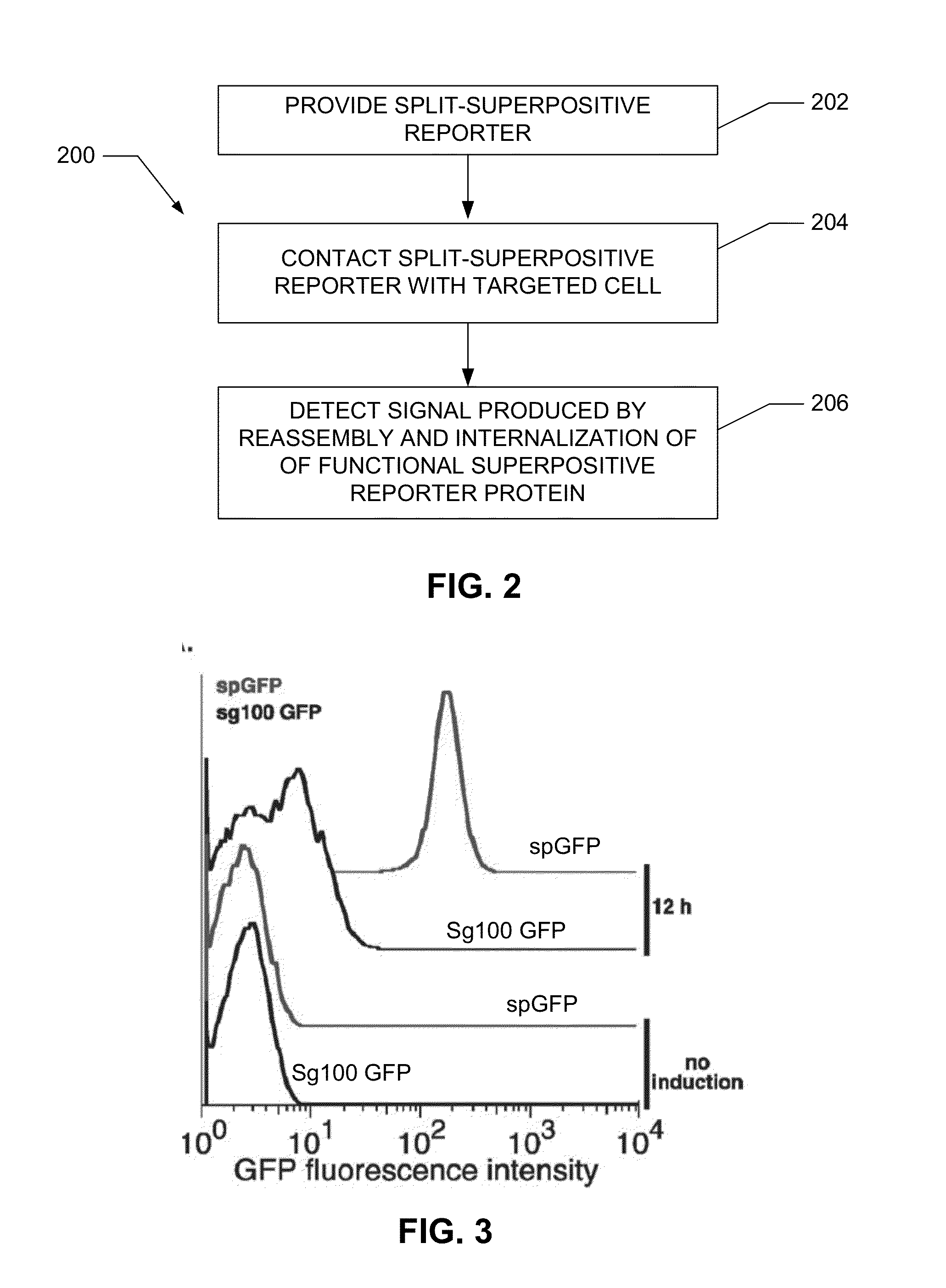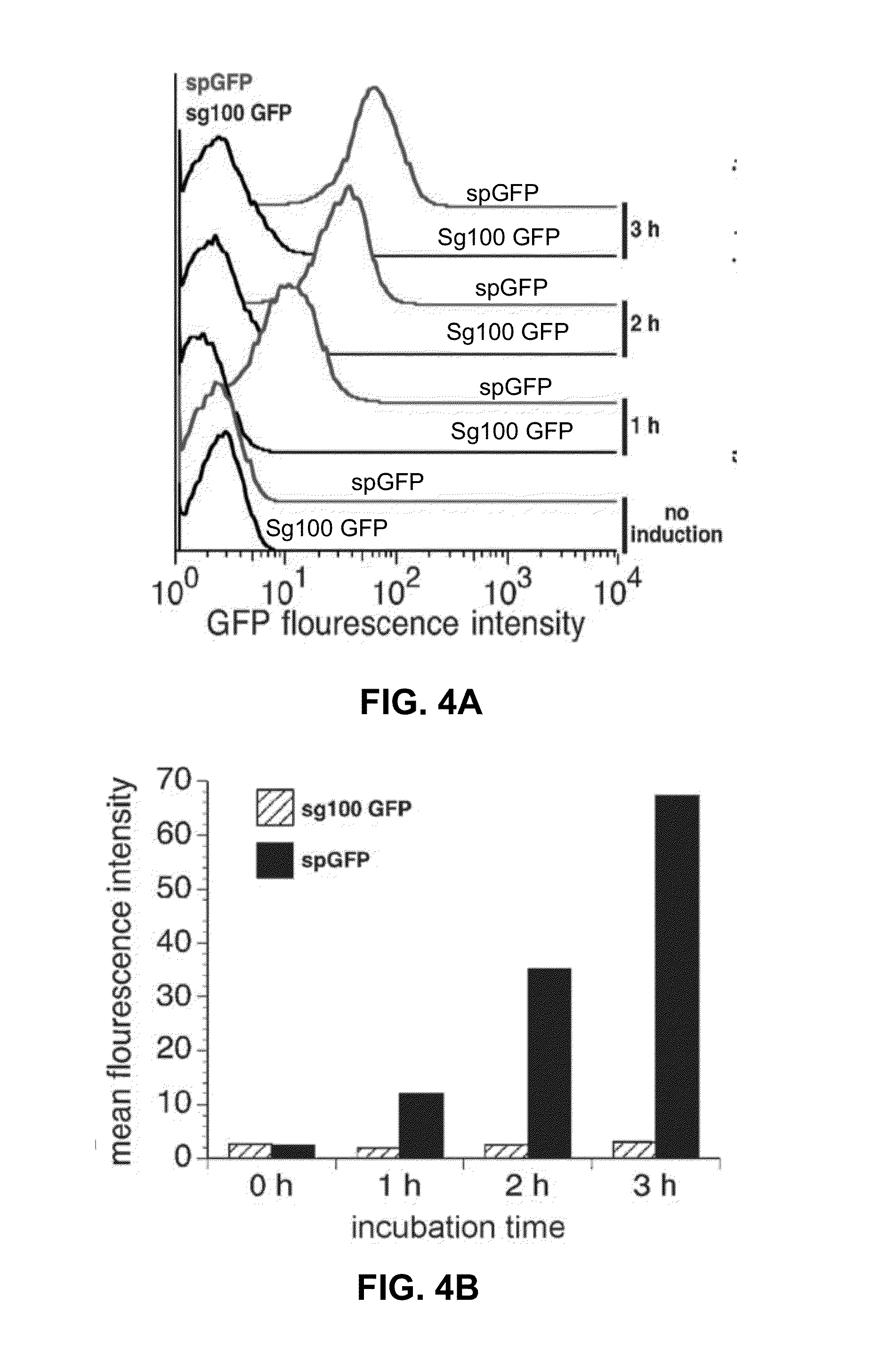Detection of biopolymer interactions, cancer cells, and pathogens using split-supercharged gfp
a biopolymer and supercharged technology, applied in the field of biopolymer interactions, cancer cells, and pathogen detection using split supercharged gfp, can solve the problems of increasing the overall length and complexity of the two-hybrid screening approach, not providing any strong information on the likelihood of identified interactions, and complicated and/or expensive equipmen
- Summary
- Abstract
- Description
- Claims
- Application Information
AI Technical Summary
Benefits of technology
Problems solved by technology
Method used
Image
Examples
example 1
Plasmid Construction
[0084]The plasmids used in Examples X-Y were either obtained from outside sources, or constructed using the following procedures.
[0085]pET11a-Z-Nsg100GFP and pMRBAD-Z′-Csg100GFP plasmids were obtained from an outside source. The pET11a-Z-Nsg100GFP plasmid included nucleic acid sequences encoding the N-terminal fragment of the stabilized GFP variant g100 (Nsg100GFP) and one of the antiparallel leucine zipper proteins (Z). The pMRBAD-Z′-Csg100GFP plasmid included nucleic acid sequences encoding the C-terminal fragment of the stabilized GFP variant g100 (Csg100GFP) and the partner protein of the antiparallel leucine zipper proteins (Z′).
[0086]pET11a-Z-NfrGFP and pMRBAD-Z′-CfrGFP plasmids were also obtained from an outside source. The pET11a-Z-NfrGFP plasmid included nucleic acid sequences encoding the N-terminal fragment of the folding reporter GFP variant (NfrGFP) and one of the antiparallel leucine zipper proteins (Z). The pMRBAD-Z′-CfrGFP plasmid included nucleic...
example 2
Generation, Growth and Induction of E. coli Expressing Split-GFP Positive Control Plasmids
[0095]To co-transform compatible pairs of plasmids (pET11a-Z-NGFP / pMRBAD-Z-CGFP, pET11a-Z-NfrGFP / pMRBAD-Z-CfrGFP, or pET11a-Z-NspGFP / pMRBAD-Z-CspGFP), the following procedures were performed.
[0096]A construct containing the N-terminal fragment was transformed into chemically competent BL21 (DE3) E. coli using a standard heat-shock protocol. These cells were then transformed with the construct containing the respective complementary C-terminal fragment using electroporation. Expression of split-GFP fragments was accomplished by first growing cells overnight to saturation at 37° C. in LB supplemented with 100 mg mL-1 ampicillin and 35 mg mL-1 kanamycin. Overnight cultures were diluted 1:100 into fresh LB supplemented with 100 mg mL-1 ampicillin and 35 mg mL-1 kanamycin. Cultures were monitored by optical density and induced at OD600≈0.60 using 10 μM IPTG and 0.2% (L)-arabinose. All protein expres...
example 3
The Efficiency of Split-sg100 GFP and Split-spGFP Reassembly were Compared Using Antiparallel Leucine Zipper Peptides
[0097]BL21 E. coli were co-transformed with pET11a-Z-NGFP and pMRBAD-Z-CGFP, where Z was the positive control leucine zipper peptide and GFP was an N- or C-terminal fragment of either sg100GFP or spGFP. In order to compare the maximum cell fluorescence generated as a result of split-GFP reassembly, E. coli were induced to express the split-GFP-Z fusions with IPTG and arabinose and incubated at 25° C. E. coli samples were prepared for flow cytometry by centrifugation and resuspension in phosphate buffered saline (PBS) and analyzed by flow cytometry using a MoFlo (Dako Colorado, Inc.) flow cytometer illuminated by a solid-state iCyt 488 nm laser.
[0098]For both systems, maximum cell fluorescence was reached after 12 hours. After 12 hours the mean cellular fluorescence in E. coli expressing the split-spGFP positive control fragments increased 75-fold compared to uninduced...
PUM
| Property | Measurement | Unit |
|---|---|---|
| Interaction | aaaaa | aaaaa |
Abstract
Description
Claims
Application Information
 Login to View More
Login to View More - R&D Engineer
- R&D Manager
- IP Professional
- Industry Leading Data Capabilities
- Powerful AI technology
- Patent DNA Extraction
Browse by: Latest US Patents, China's latest patents, Technical Efficacy Thesaurus, Application Domain, Technology Topic, Popular Technical Reports.
© 2024 PatSnap. All rights reserved.Legal|Privacy policy|Modern Slavery Act Transparency Statement|Sitemap|About US| Contact US: help@patsnap.com










